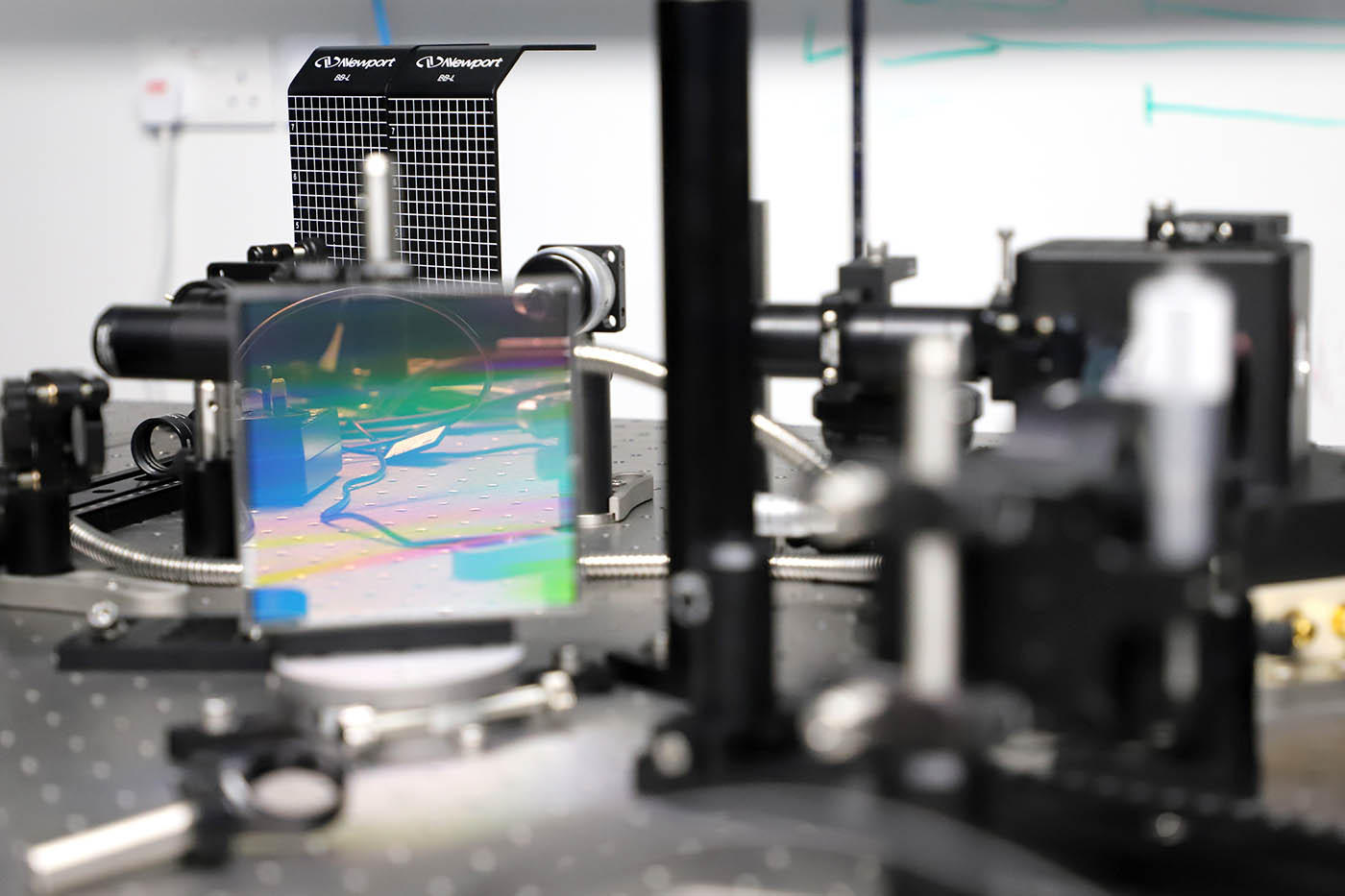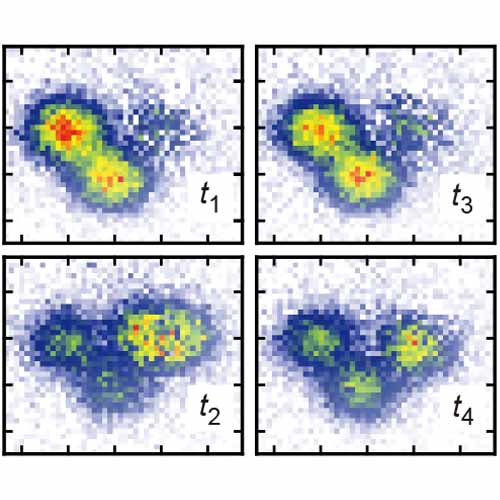Highlights
Quantum fluid of light ripples to theory’s predictions
 This apparatus is designed to create and observe a quantum fluid of light. Maxime Richard has been setting up a new lab since moving to Singapore in October 2022.
This apparatus is designed to create and observe a quantum fluid of light. Maxime Richard has been setting up a new lab since moving to Singapore in October 2022.
Researchers have measured spontaneous waves in a superfluid of light for the first time. CQT Visiting Associate Professor Maxime Richard and his collaborators detected the signature of ‘Bogoliubov excitations’ in a device they designed for the purpose.
The team report the findings in a paper published in Physical Review X on 26 December.
In the future, the quantum fluid of light could be used to simulate cosmological quantum effects, such as Hawking radiation at a black hole horizon. These devices also have promise as sources of entangled photon pairs for quantum technologies.
Maxime led the project, making the experimental measurements when he was at the Institut Néel of the French National Centre for Scientific Research (CNRS) and University of Grenoble Alpes in France. He moved to Singapore in October 2022 to join the Majulab International Research Laboratory, which is run by the CNRS together with research organisations in France and Singapore. CQT hosts some of the MajuLab team.
At CQT, Maxime continued to work with his collaborators on the theoretical description of the results.
A short history of superfluidity
Superfluids are a quantum state of matter first observed in the 1930s when helium was cooled to very low temperatures. In this state, the liquid has no viscosity. Stirring will make vortices that whirl forever.
A superfluid can also ripple with wavelets, now known as Bogoliubov excitations. These wavelets play a key role in establishing the superfluid state and follow a characteristic dispersion relation describing how fast each wave frequency travels. The excitations are named for Nikolay Bogoliubov, a theoretical physicist who came up with the first microscopic description of superfluidity in the mid-20th Century.
Researchers have worked out since then how to create superfluidity in other systems. In the early 2000s, researchers made clouds of cold atoms behave like a superfluid. More recently, researchers worked out how to make superfluids of light.
Maxime says, “Bogoliubov theory has been very successful in cold atoms. One of the games here was to understand whether it applies to this quantum fluid of light, which is an open quantum system, and how far that works.”
How they did it
A proven route to make a superfluid of light is to manipulate light in a semiconductor device known as a microcavity. The microcavity is a chip constructed with layers of different materials. Some layers define a pair of mirrors that trap light between them. The trapped light is made to interact with the material inside the cavity, such that the photons effectively interact with each other. The interaction enables the superfluid behaviour.
Maxime’s team has a longstanding collaboration with researchers at the Centre for Nanoscience and Nanotechnologies by Paris-Saclay University and CNRS who are expert at making the microcavities.
His team carried out the measurements: cooling the chip, beaming light into it with an infrared laser, and then measuring the photons that leak out. The leaks happen because the cavity mirrors can never be perfect.
The signature of the spontaneous formation of Bogoliubov excitations was clear in the leaked photons: the data the team collected closely followed their theoretical predictions. Their setup used no probe and was carefully designed to be free from extrinsic electronic noise.
 To look for evidence of superfluidity, the researchers used several diffraction gratings to separate the weak signal generated by the Bogoliubov excitations from that coming from the rest of the quantum fluid. Here in Maxime’s new setup, the diffraction grating appears as a rainbow-coloured square.
To look for evidence of superfluidity, the researchers used several diffraction gratings to separate the weak signal generated by the Bogoliubov excitations from that coming from the rest of the quantum fluid. Here in Maxime’s new setup, the diffraction grating appears as a rainbow-coloured square.
To achieve a quantitative understanding of this fundamental emission, the team developed a new theoretical framework that includes the quantum fluid interaction with the crystal lattice vibrations naturally present in the semiconductor materials.
That new theoretical work is important for potential applications of the phenomenon. Its value as both an entangled light source and as a simulator lies in correlations among the photons that escape the cavity. The team’s calculations show the correlations are only fully developed when the chip is cooled to within a few Kelvin of absolute zero.
Since he moved to CQT, Maxime has been setting up a new lab. He would eventually like to run two experiments dedicated to these two different goals. For now, he’s happy to have a first setup running, and he is hiring to build a team.
“I’ve got some meaningful photons that reached my detectors. It’s what we call the first light. Now the real physics starts,” says Maxime.
Learn more
Related Stories
 | Trembling signals how cold atoms could simulate high-energy physics September 20 2022 |
New methodology can guide design of energy-efficient quantum computers November 29 2023 |






